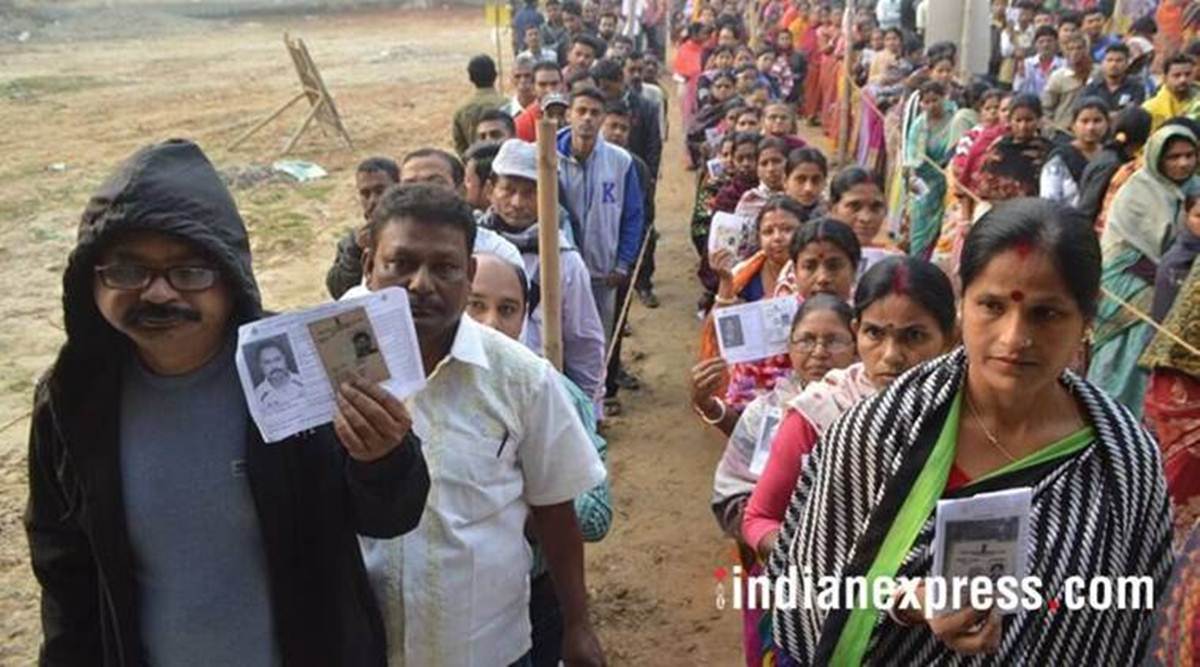 Financial empowerment and autonomy are linked to a transition away from traditional and orthodox family structures.
Financial empowerment and autonomy are linked to a transition away from traditional and orthodox family structures.The first and second phases of the Bihar elections reported a turnout of 54.26 per cent and 53.51 per cent respectively. But what has come into sharp focus is the rising turnout of female voters as the state gears up for the final phase of polling on November 7. Reports suggest that women may outnumber men in terms of absolute numbers this year. Strategically, Nitish Kumar is counting on female voters, with women being the centrepiece of JD(U)’s 2020 manifesto.
In 2015, when the Bihar elections saw the highest female voter turnout since 1962, Kumar delivered on his promise to them by introducing the Bihar Excise (Amendment) Act, 2016 — a statewide liquor ban. The economic cost of the ban in terms of the loss of state revenues and incomes is well-evidenced. However, its impact on reducing domestic violence, crime and poverty has been lukewarm.
What is also contentious is whether women in Bihar make independent political choices or if they simply mirror and reinforce the political choices of the male members of the household. The former would indicate political empowerment and the strengthening of participatory democracy. In the current context, it would mean that campaigning for women’s well-being and promising sops to them is likely to sway voters in the JD(U)s favour. In contrast, the latter would merely imply a doubling of the votes cast by the male voters: Essentially, who comes to power and stays out of it, will be governed by men.
The next logical question would then be: Who are the majority of the men likely to vote for in these elections? Since 2015, the disenchanted male population has viewed the alcohol prohibition in direct contravention with their predilections. Moreover, with the growing frustration from high poverty levels, joblessness and the ongoing pandemic, they may be inclined to vote against JD(U).
Returning to our premise, the rise in female voters presents a promising trend. What may be valuable to explore is whether they have the potential to sway the political landscape autonomously. An understanding of women’s political agency would require us to take a step back and delve into the social, economic and cultural factors at play.
In Bihar, there is a culture of early marriages and the institution is virtually universal, as per the Census 2011. Nearly 80 per cent of women get married before the age of 21. This means that an average female voter in Bihar is a married woman. Understandably, male members of a woman’s marital household may potentially influence her political choices. Given the near-universality of early marriages and low female agency, the state has the highest total fertility rate in the country, a low contraceptive prevalence and a strong desire for male children. Together, these factors indicate that reproductive agency of women in Bihar is, at best, low.
Also, the social status of women in Bihar is dismal. With over half of the female population unable to even read or write, one may question whether the women even have any understanding of political ideologies or any inclination to vote for a specific party. Add to that, the widely prevalent gender discriminatory norms and household dynamics, which place limits on women’s agency, access to resources and physical mobility. Almost two-thirds of women in Bihar stated as having experienced some form of physical or sexual violence. As a corollary, it may not be a far cry to expect some degree of voter intimidation. But in many cases, it is likely to be a more inconspicuous male influence in decisions governing almost every aspect of women’s lives. For instance, an alarming figure of 34 per cent of women stated as not having the authority to make decisions about their health within their households. These gender inequalities are likely to loom over women’s preferences and choices. They may likely choose to defer decisions about state and national politics to their male counterparts.
Financial empowerment and autonomy are linked to a transition away from traditional and orthodox family structures. In Bihar, only 20 per cent of women in the 15-49 years age group stated that they were employed. These figures are potentially much worse now, with the COVID-19 pandemic. This implies that traditional family structures and gender norms in Bihar continue to remain intact. A second related inference is that nearly 90 per cent of women in Bihar are financially-dependent on their husbands.
Against this background, with virtually no reproductive, economic and social agency, an average woman in Bihar is likely to make similar political choices as her male counterpart. This is not to say that there may not be a section of the female population that exerts its autonomy via secret ballot.
But overall, the socio-cultural and economic contexts in Bihar disproportionately disfavour women and are likely to prevent them from voting according to their agendas. It is, therefore, conceivable that women’s votes are likely to swing in the same direction as their male counterparts. JD(U)’s political campaign, after all, may not work.
The writer is a social policy researcher and analyst. Views are personal